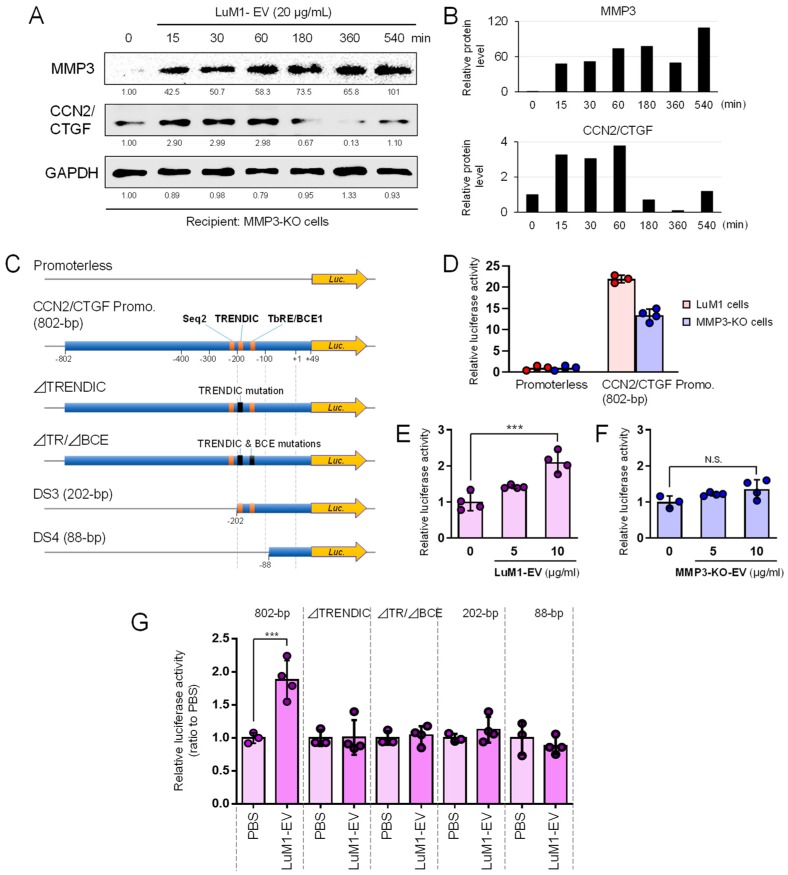Figure 7.
Oncosomal delivery of MMP3 induces CCN2/CTGF through transcriptional activation. (A,B) LuM1-derived MMP3-rich EVs were added to culture media of the MMP3-null recipient cells at a final concentration of 20 µg/mL. Cells were lysed at each time point (0, 15, 30, 60, 180, 540 min) after the addition of EVs. (A) Western blotting showing MMP3 and CCN2 in the recipient MMP3-KO cells. (B) The band intensities of MMP3 and CCN2, measured from panel A. The values relative to GAPDH are shown. (C–G) CCN2/CTGF promoter response to LuM1- or MMP3-KO-EVs. (C) Schemes of reporter constructs. Top to bottom; a promoterless construct, human 802-bp CCN2/CTGF promoter-driven luciferase (Luc.) reporter construct, ⊿TRENDIC mutant, ⊿TRENDIC/⊿BCE double mutant, and the 202-bp and 88-bp short promoter constructs (DS3 and DS4), respectively. (D) Relative activities of CCN2/CTGF promoter in LuM1 vs. MMP3-KO cells. phRL-TK was used as a control reporter vector. *** p < 0.001, n = 3 to 4. (E,F) Effects of LuM1- and MMP3-KO-EVs on CCN2/CTGF promoter activity in MMP3-KO cells. (E) LuM1-EVs or (F) MMP3-KO-EVs at final concentrations of 5 or 10 µg/mL or PBS was added to the serum-free culture media of MMP3-KO cells. *** p < 0.0001, n = 3 to 4. N.S., not significant. (G) Oncosomal responsivities of 802-bp CCN2/CTGF promoter and mutants. LuM1-EVs (10 µg/mL) or PBS was added to the serum-free culture media of MMP3-KO cells. *** p < 0.0001, n = 3 to 4. The experiments were repeated twice in Figure 7A,D,E.

